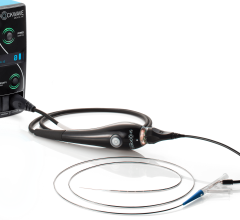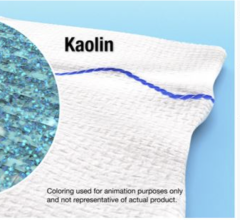
When cath labs begin performing radial access procedures, both the staff and the operators need to keep an open mind and recognize that it takes time for everyone in the lab to become proficient in doing things in a different way. Learning a new skill can take time and dedicated effort, and as long as one recognizes that, a fledgling transradial program can flourish rather than be abandoned.
We offer the following tips for consideration based on our own experience.
Room Setup
The room setup is in fact not all that different than with femoral access. There are some operators who prefer an entirely different set of catheters to use for radial access. In our experience, many of the same catheters we use for femoral access can be used for transradial angiography and intervention. An easy way we have found to allow our lab to do both types of access is to put all the specialized radial equipment (micro puncture kits, hydrophilic sheaths, selected special catheters and radial hemostasis bands) on a rolling cart, which allows easy transfer from one room to the next.
Prepping the Arm
We typically use a standard prep with the addition of some sterile towels and a plastic “bull’s-eye” to keep the arm sterile. A moveable arm board is nice to have because it allows access to be obtained with the arm abducted, and then brought into the patient’s side for the catheter manipulations. This is not a requirement however, and there are several easy and innovative modifications to existing cath lab equipment that can be made that basically serve the same functions.
For example, an arm board can be used as a table extension. Another option is to raise the arm, prop it on the thigh, and use the patient’s thigh/leg as a “table,” just as we do for femoral cases.
Specialized Access Tools
The main item that is different from femoral procedures is the use of a micropuncture access kit (or similar radial access kit). Hydrophilic sheaths and standard workhorse wires of 0.014 inch thickness are also useful to have to prevent spasms and navigate tortuous arm vessels.
There are specialty devices designed specifically for radial access procedures, but many operators say they get along fine using standard devices generally used for femoral access. Like anything, the tools that you get used to are the tools that will work best for you. We are not at all dogmatic in our approach and think that the best one is where the operator incorporates various tips and tricks to create an individualized toolbox. It would be like two carpenters arguing over whose toolbox is best. In the end, there are common tools to all toolboxes, but every person has their favorites.
Specialty Drapes
The use of specialty drapes for radial access varies from lab to lab. To save space and ordering complexity, we use a standard femoral kit with extra sterile towels and a bull’s-eye drape, or just a hole cut in a sterile towel. We typically prep the radial and one groin (largely because there is already a femoral hole in the drape), but will adapt this according to the situation.
Assessing Arteries Prior to Access
We use the plethysmography-based Barbeau test prior to all cases and make sure that it is documented in the chart. This can be done in the holding area as part of the pre-cath workup. We will also feel the pulse and ask any pertinent questions related to hand/arm trauma, prior lymph node dissections and so on.
Radial Hemostasis
We use compression bands for hemostasis with defined times for when the bands should be loosened and/or removed. We do not feel strongly regarding the type of band; some are more comfortable than others, and some are less expensive than others. As with anything, once our staff is used to one type of device, they gain a lot of experience with it and become proficient at managing it, learning its advantages and disadvantages.
Learning More About Transradial Access
The authors of this article are the program directors of the upcoming NYCTRAC (TransRAdial Course) June 28-29, 2013, in New York City. The topics discussed in this article and others will be covered in more detail during this course, which is designed to educate both the operators and their cath lab techs and nurses. Additional information on the conference can be found at transradialcourse.com.
Other Radial Access Information Sources on DAIC
Radial Access Adoption in the United States
VIDEO: Update on U.S. Transradial Access Adoption With Sunil Rao at TCT 2015
Eight Tips to Make Radial Access Successful
Radial Access May Offer Cost Savings
Patient Satisfaction and Complications of Transradial Catheterization
VIDEO: Radial Access Recovery Lounge Mimics Cafe Atmosphere
The Economic Benefits of Transradial Access
Tips When Prepping for Radial Procedures
Choosing Tools for Transradial Procedures
Editor’s note: Ajay J. Kirtane, M.D., SM, is from New York-Presbyterian Hospital/Columbia University Medical Center; Philippe Généreux, M.D., is from the Hôpital du Sacré-Coeur de Montréal, Canada; and Stéphane Rinfret, M.D., SM, is from the Quebec Heart and Lung Institute, Quebec City, Canada. All three are faculty for the Cardiovascular Research Foundation (CRF).


 May 01, 2025
May 01, 2025 









